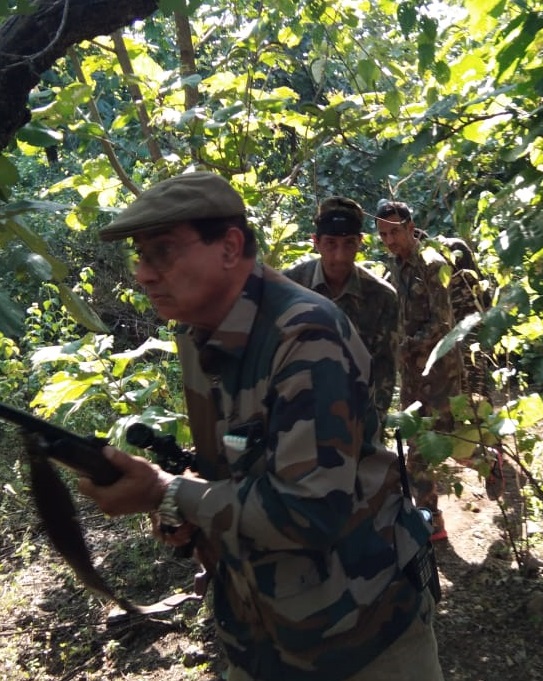Will new tiger conservation guidelines stop Hyderabad’s last hunter?
By Newsmeter Network
Hyderabad: Bad news for Hyderabad’s last wildlife hunter, ‘Nawab’ Shafat Ali Khan, whose recent hunting operations, including Tigress Avni, have been controversial ventures. According to new guidelines issued by the National Tiger Conservation Authority (NTCA), released on November 11, private sharpshooters are now prohibited from undertaking hunting operations. Though confusion remains as to whether the government and the forest department will stop granting permissions to private hunters, wildlife enthusiasts and conservationists welcome this change.
K M Abharna, Deputy Conservator of Forests, Pandharkawada states that Section 38 of the Wildlife Protection Act, gives NTCA the final authority to issue directions in writing for the protection of tigers. However, in another section of the act, ie, Section 11 (a) of the Wildlife Protection Act 1972 specifies that “The Chief Wild Life Warden may, if he is satisfied that any wild animal specified in Schedule I [includes tigers and leopards] has become dangerous to human life…by order in writing… permit any person to hunt such animal or cause such animal to be hunted.” The new NTCA guidelines also specify that only government officials may carry on capture/tranquilising operations and that no private sharp-shooters will be appointed from now on.
This conflict between the recent guidelines and the 1972 Act is a cause for confusion, especially so after the death of tigress Avni. Imran Siddiqui, a co-founder of Hyderabad Tiger Conservation Society (HyTiCoS), says that the new guidelines make it illegal for any private person to engage in the capture or tranquillising of animals. “The government cannot permit hunting leopards or tigers from now on, as per these guidelines. The Wildlife Protection Act says that they may authorise other officers to do it, but permitting private people is not specified in the Act,” he says.
Hyderabad's last hunter's take on NTCA guidelines
However, the infamous hunter Shafat Ali Khan believes that the new NTCA guidelines are in complete contradiction of the Wildlife Protection Act of 1972, and thus, cannot be implemented. “The Wildlife Protection Act of 1972 gives statutory power to the Chief Wildlife Warden to decide on who should undertake the capture. The Act says that it can permit any person with expertise, and so doesn’t specify a departmental person. The guideline cannot supersede the Act, in my opinion,” he says.
It was Hyderabad-based sharp-shooter Nawab Shafat Ali Khan and his son Asghar Ali Khan who put the tigress Avni aka T1 to rest, on November 2, 2018, sparking controversy among wildlife activists. The Maharashtra forest department had also closed the case against the hunter for shooting the tigress.
Another change brought about the NTCA guidelines is in the terminology used while referring to tigers. While earlier, the term ‘man-eater’, inherited during British Raj, was used continuously for tigers that caused harm to humans, the tiger conservation authorities have rephrased it by calling tigers “dangerous to human life”. Conservationists like Imran believe that such rephrasing will help reduce the hype created around tigers by calling them “man-eaters”.
Yet, hunters such as Shafat Ali Khan believe that such changes are merely superficial. “The villagers’ concerns are about basic survival, about being killed by a tiger or not, and about their crops. What difference does it make to an ordinary farmer living in a village if you change these terms?” he asks.
He also alleges that the forest department is ill-equipped to handle situations where it is necessary to capture or re-locate wildlife, like tigers and leopards. “The NTCA has not provided sufficient training to their officers or made them efficient to handle these situations. No department in this country owns a .375 magnum rifle that is necessary for such operations. It is why they are compelled to call experts like me for tranquilising or capturing operations,” he added.
It is clear that loopholes between these two laws, both intended for wildlife conservation, has created tension between wildlife conservationists and the law. If private persons are granted permission to take over wildlife operations, is the forest department at fault or the private person? With these new guidelines, are the respective state governments ready to take up such operations on their own? More importantly, are they able to address the larger question of animal-man conflict that is worsening every day? So many million-dollar questions still need answers.